Late spring is when the flower kingdom really gets popping, and those blossoms can appear in some pretty unlikely places.
Kenilworth Park and Aquatic Gardens (U.S. National Park Service)
Washington, D.C.
nps.gov/keaq
Kenilworth Park and Aquatic Gardens (Video by Bill Newcott)
You turn off a busy Washington, D.C. highway, wind through several blocks of modest two-story apartment buildings, and suddenly, in the middle of an urban landscape, you encounter one of America’s most lush aquatic gardens.
A boardwalk trail plunges into a wooded area dotted with ponds, each one seemingly paved with green, tile-like lily pads. Pink lotus flowers with yellow, button-like seedpods push toward the sun. Bees play hide-and-seek in the beaming petals of water lilies. Sit on a shady bench, and it’s not hard to imagine yourself in a Monet painting.
On the ponds’ sloping shores, turtles soak up daylight. And everywhere in the 700-acre park, birdsongs make you forget you are less than five miles from the U.S. Capitol building.
Ten thousand years before it became part of the National Parks network, this place was the home of the Nacotchtank people, who lived and fished on the shores of what is now known as the Anacostia River. More than 100 years ago a local landowner began cultivating the marshy spot as an aquatic garden. It’s been under the Federal government’s protection since the 1930s.
Even in mid-winter, the gardens are a quiet retreat from city life. But in summer the place really comes alive with the July Lotus and Water Lily Festival.
The Flower Fields of Carlsbad
Carlsbad, California
theflowerfields.com
The Flower Fields (Video by Bill Newcott)
If you’ve ever wondered what 80 million red, yellow, and white ranunculus flowers look like, head for the quiet little town of Carlsbad, California, a bit north of San Diego.
I am in a golf cart, rumbling up a vast, sloping hillside, surrounded by a Technicolor fantasia of blossoms. The carpet of color stretches as far as I can see from right to left. With a glance backward, I can see it rolling down toward Carlsbad and, beyond that, the blue Pacific.
We stop abruptly.
“This is my favorite spot,” says my host, Fred Clarke, the horticulturalist in charge of making sure those 80 million flowers grow and get to market each year.
“See how the orange blends into the yellow, with just a touch of pink? Outstanding!”
For a moment, I’m kind of jealous.
Each spring, some 100,000 people visit the Flower Fields of Carlsbad, California, snapping photos from tractor-pulled wagons or strolling along the dirt roadways of what is one of America’s busiest working flower farms.
If you’ve got a ranunculus in a vase at home, it almost certainly sprouted within sight of where we’re now riding. These fields were once covered with poinsettias, for decades the specialty of the Ecke family, who own the spread. But as poinsettia growing moved to Mexico, the cash crop here became ranunculus, a hearty flower that travels well and can live up to 10 days in a vase.
But the fields’ original premier plant still has a place here, in a translucent white shed tucked near the visitors’ center.
“Here we are!” he enthuses as we step inside. Sitting on a series of low, tiered risers, lining three walls of the shed like a red-haired circus crowd, are scores of potted poinsettia plants, arranged chronologically in order of their development from the century-old “St. Louis Red” — the first mass-produced poinsettia — to the Prestige, circa 2002, now the most popular poinsettia on the planet, known for its rich color and stamina.
“C’mon,” says Clarke. “Let me buy you a strawberry milkshake. The Flower Fields are famous for ’em.”
We head for a small stand, a few feet away. Clarke suddenly stops and casts his gaze up the multicolored hill.
“This is my office,” he says, as if realizing it for the first time. He turns to me.
“I don’t know what your office is like, but mine is better.”
Lady Bird Johnson Wildflower Center
Austin, Texas
wildflower.org/visit

You can drive all over the quarter-million square miles of Texas to experience its near-infinite variety of wildflowers — or you can make one colorful stop at the Lady Bird Johnson Wildflower Center, co-founded by the late wife of President Lyndon B. Johnson and her friend and fellow conservationist, the actress Helen Hayes.
Along the center’s 284 acres of winding trails, you’ll find a constellation of spring wildflowers including the brilliant Texas yellow star (naturally) along with giant spiderwort, with its violet petals and yellow stamens, pink evening primrose, and defiantly fake-looking winecup.
In all, some 900 species of native Texas plants dot the grounds, a welcome haven for 143 species of birds and at least 15 types of mammals.
Death Valley National Park
California-Nevada
nps.gov/deva/learn/nature/wildflowers
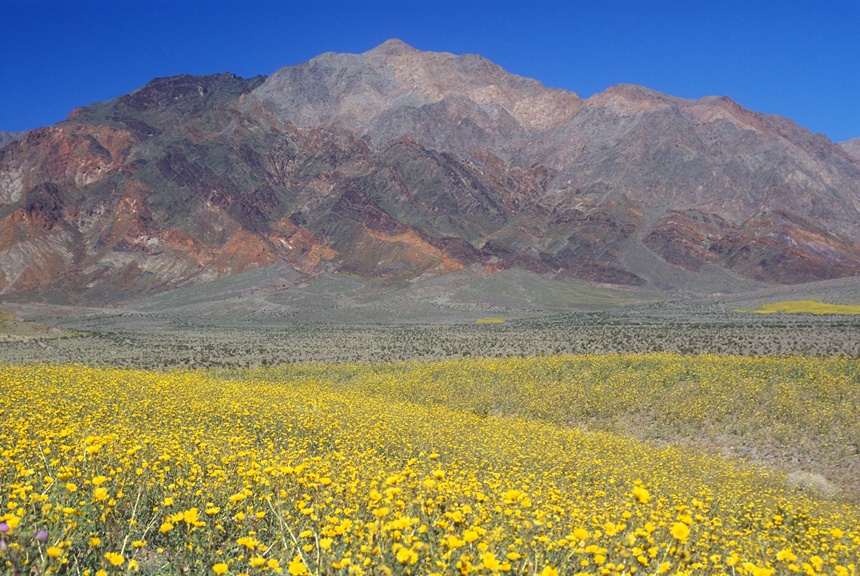
Don’t get me wrong: You’re not going to find hillsides exploding in color here in one of the driest, hottest places on Earth. But that’s what makes the discovery of spring flowers here all the more satisfying.
Look closely, and you may spot teeny blossoms of desert gold — resembling buttercups on tall, bare stems — standing above low-lying patches of purple sand verbena.
And every so often — once a decade, on average — the desert floor erupts into what the park rangers call a spring superbloom. It happens only under rare meteorological conditions, specifically after a particularly rainy fall season.
Most recently, superblooms have come in 2005 and 2016. Before you load up your canteen and trudge out in search of one, check with the ranger station first.
International Rose Test Garden
Portland, Oregon
portland.gov/parks/washington-park-international-rose-test-garden
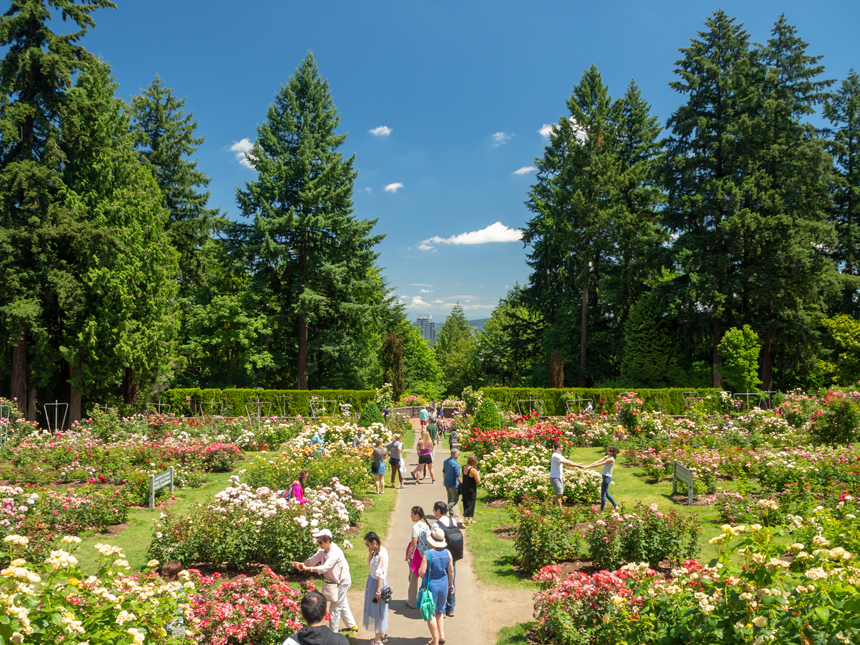
Maybe a rose is a rose, but on this hillside overlooking Portland, that rose could be one of 610 varieties, blossoming from May through October.
In fact, at the height of the season some 10,000 rose bushes are abloom at the country’s oldest continuously operated public rose test garden (if you must know, there are right now 11 official rose test sites nationwide). The first roses were planted on this seven-acre expanse in 1917 by the Portland Rose Society, which has been pricking its collective fingers on rose thorns since 1889.
Even if you don’t know your ‘Penelope’ from your ‘Polyantha,’ a stroll through Portland’s rose garden is a tranquil endeavor. The Shakespeare Garden features roses named after characters in the Bard’s plays (“Of all flowers,” he wrote, “methinks the rose is best.”) And in a quiet sunken garden you can admire a world-class collection of award-winning miniature roses.
Lavender Fields at Warrington Manor
Milford, Delaware
lavenderfieldsde.com

From a distance, it appears that the people wandering these fields of brilliant lavender flowers are walking waist-deep in a sea of purple ink. Spreading over five acres of former dairy farmland, the blossoms of Lavender Fields sway in a gentle spring breeze, drawing the attention of butterflies and hummingbirds alike.
And then there’s the scent: That unmistakable aroma that has captivated royalty and regular folks for millennia. The Egyptians used it for mummification; high-end hotels provide it to their guests as a pillow spray to enhance sleep.
“Even in the dead of winter,” says Marie Mayor, co-owner of Lavender Fields, “I can sit on the front porch of our shop and smell the lavender, because the oil is in the stems and the leaves.”’
It helps that there are thousands of lavender plants sprouting across the property, towered over by two old silos, remnants of the old dairy farm. The lavender is in full bloom from May through the summer; then the fields’ dahlia plants kick in, painting the landscape with a new color palate (although the purple ‘Emperor’ dahlia are mighty lavender-like in hue).
“The look and the scent of lavender; they just have this calming effect,” says Mayor, and the soft lilt in her voice suggests she’s in some danger of overdosing.
She sighs. “Everything about it is beautiful.”
Become a Saturday Evening Post member and enjoy unlimited access. Subscribe now
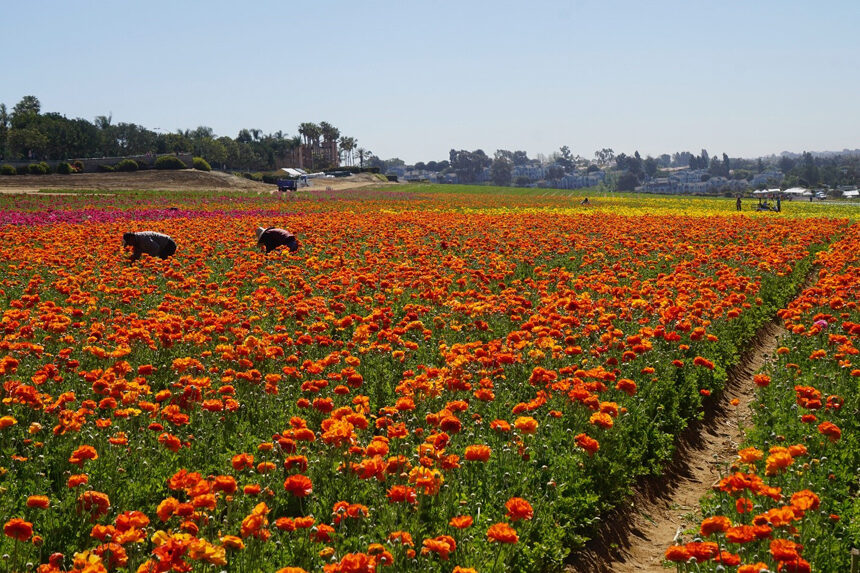
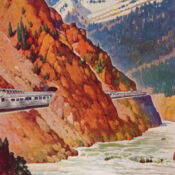
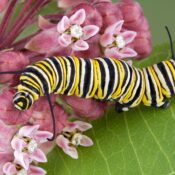

Comments
My favorite places are the Holland and Pella Tulip Festivals. The best is my wife’s Planter on our patio that I see every day during breakfast.
What a beautiful feature, Bill. They’re all different, each contributing to the full spectrum of these amazing spring flowers in different states across the country. My favorite has to be the Lavender Fields in Delaware, probably as much for the calming effect of the lavender oil in the stems and leaves, as for the flowers otherwise.
I can certainly understand why Marie Mayor would want to sit on her front porch as much as possible. Me too. I buy some really good lavender oil at Sprout’s (need to get more), as well as other wonderful aromatic, healing oils. They’re a ‘must have’ in these relentlessly ridiculous, terrifying times.